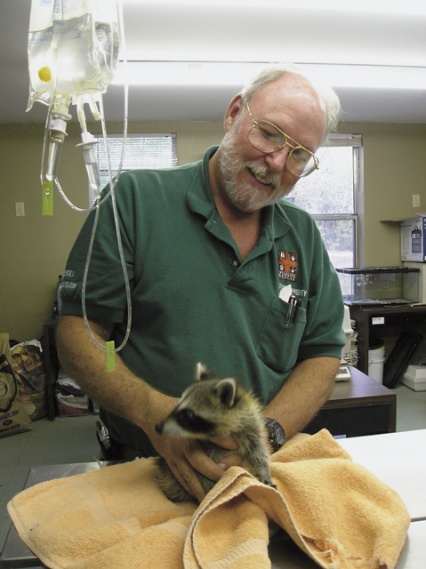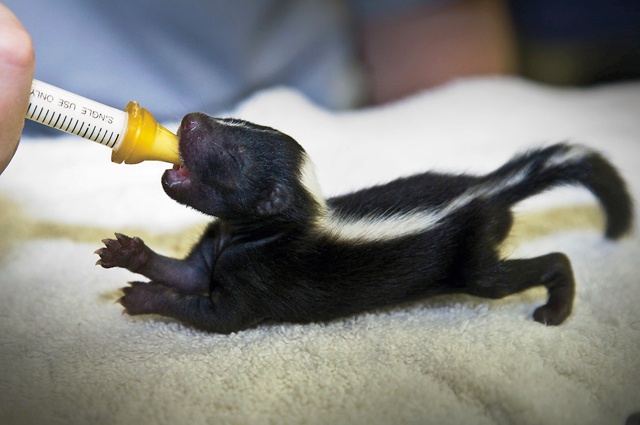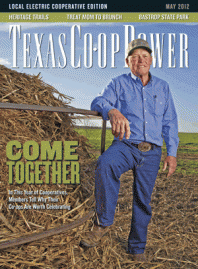The ravages of wildfires and drought have taken a toll on Texas’ wildlife, underscoring the crucial roles of approximately 320 state- and/or federal-permitted wildlife rehabilitation agencies and individuals operating in more than 70 counties.
Most of these wildlife rehabilitators are volunteers, and some work from their homes in coordination with nonprofit organizations. For all, the overarching goal is the same: Provide food, water, shelter and medical treatment to orphaned, injured, sick and displaced animals and return them to the wild whenever possible.
Even during the best weather years, it’s not a Monday-through-Friday job, explains Carol Lee, who founded the Lubbock-based South Plains Wildlife Rehabilitation Center in 1988. Typically by early May, for example, many birds have mated and started families.
“We know that because the phone starts ringing,” says Lee, who retired as the center’s executive director in May 2011 but still serves on its board of directors. “Every call starts the same: I found a baby bird … what do I do?” (Answer: Unless the bird is bleeding or obviously injured, it’s usually best to leave it alone. Upon leaving the nest, fledglings can spend several days on the ground perfecting survival skills under the tutelage of their parents. If a young bird is trying to hop and flutter away from you, it probably doesn’t need help.)
But during these harsh climatic times—State Climatologist John W. Nielsen-Gammon has said drought conditions could continue for several years—answers on how to help wildlife in general are not so easily come by. Wildlife rescuers across the state are trying to save the lives of starving animals, such as raccoons, opossums, migrating birds and Red-tailed Hawks struggling to find rodents to eat. There are reports of hawks being hit by vehicles as the desperate raptors chase prey across roads.
Brutal, unrelenting heat over the past year has dried up rivers, streams, springs, puddles and ponds, wreaking havoc on all species. Plants and grasses have suffered, and the insect populations that feed birds, bats and other creatures have been decimated as the circle of wildlife, in some regions, spins almost to a halt.
Severe drought conditions have radically affected the Lubbock area, Lee says. In 2011, native species, such as deer, were having little luck foraging for food, and some mothers, unable to produce enough milk, abandoned their fawns.
Preston Doughty, president and executive director of Austin Wildlife Rescue, says his facility is receiving many “extremely emaciated” animals. As larger areas are affected by drought, he explains, small animals are unable to travel far enough to find ample food and water to survive. “Starvation results and quickly moves up the food chain,” Doughty says.
The suffering extends to animals whose habitats have been destroyed by wildfires. “Thousands of acres of forest land have burned here in the Northeast,” says wildlife rehabilitator Nancy Holloman of Farmersville, near Dallas. “Animals are quickly losing their homes. With the loss of habitat, they’re looking for new housing, food and water sources.”
Such agencies as Lubbock’s SPWRC—the only rehabilitation facility within a 350-mile radius that accepts all native wildlife species—are housing, and releasing, as many animals as possible.
Wildlife rehabilitators generally operate under permits from the Texas Parks and Wildlife Department and the U.S. Fish and Wildlife Service. The nonprofit rehabilitation agencies receive no funding from state or federal regulatory agencies and rely almost exclusively on donations to offer services at no cost to taxpayers.
Rehabilitators urge people to learn wildlife rescue basics. Parents often leave their young unattended for several hours, says Gail Barnes, volunteer and education coordinator for the SPWRC. Observe an animal from a distance, she says, allowing the mother and baby to reunite. If you decide an animal needs rescuing—particularly if it is covered with insects, appears injured or ill or is in obvious danger—call your nearest wildlife rehabilitator for direction.
“If it’s an emergency, keep the animal warm, quiet and in a dark environment,” Barnes says. “Don’t feed it anything—not even water, milk or bread. Food can kill a dehydrated animal; allow the rehabilitator to administer the proper hydration fluids.”
Handle rescued wildlife as little as possible, Barnes continues, and wash your hands thoroughly or wear heavy gloves. Place a rescued animal in a cardboard box just slightly larger than the animal; punch air holes and tape the box shut. Remember, she says, it is illegal for the public to possess a wild animal or bird. The best course of action is to call a permitted rehabilitator.
Wildlife rehabilitators statewide echo the same compassionate refrain: “People look at me like I’m crazy when I tell them I do this for free,” says Sheree Etie, president of the board of directors for the Angleton-based Gulf Coast Wildlife Rescue. “Caring about animals is contagious. I know what I do makes a difference.”
——————–
Patricia Strutz is a fishing guide and outdoor writer who splits her time among Wisconsin, Florida and everywhere in between. She often travels to Texas to visit family and friends.




